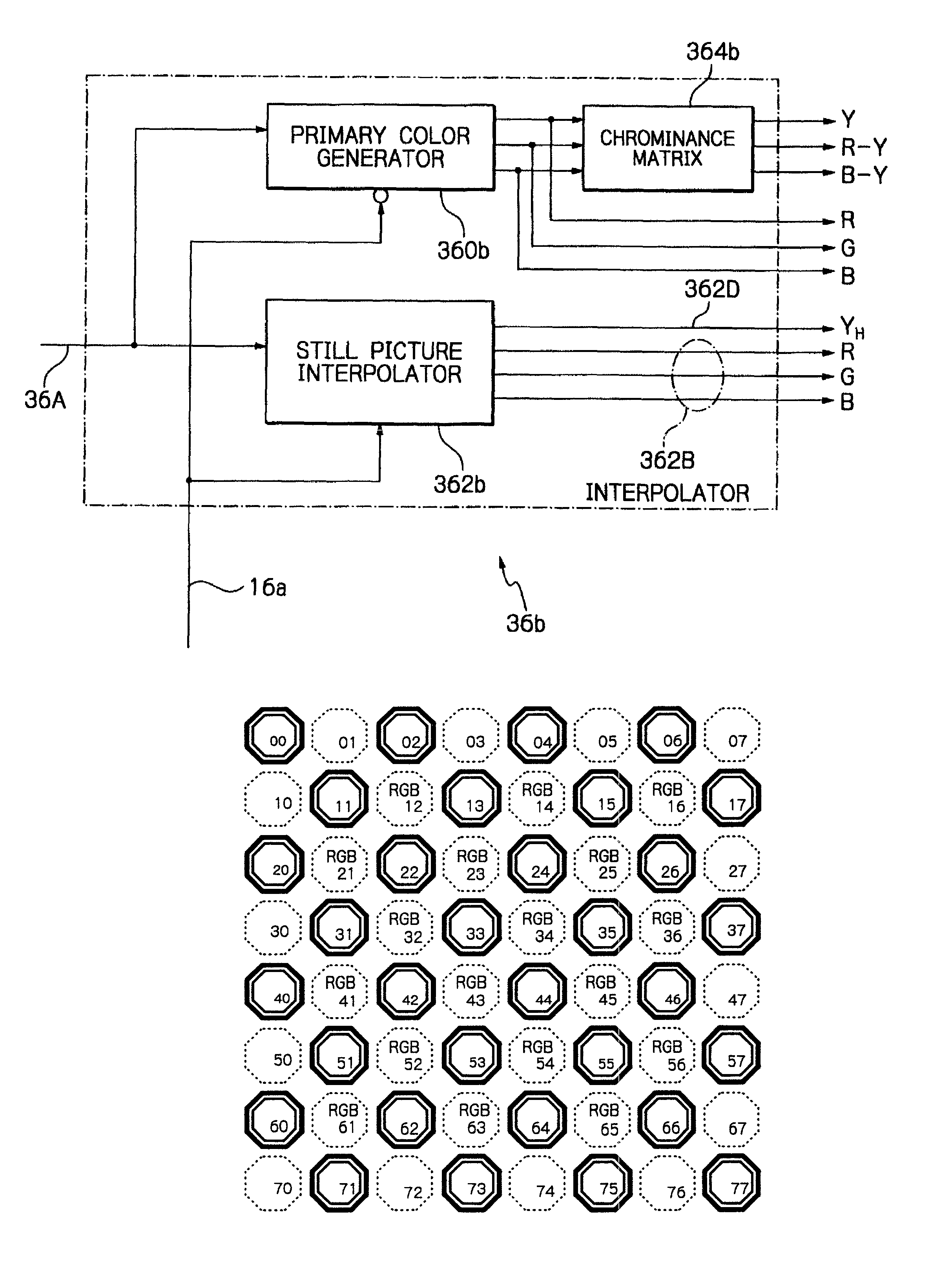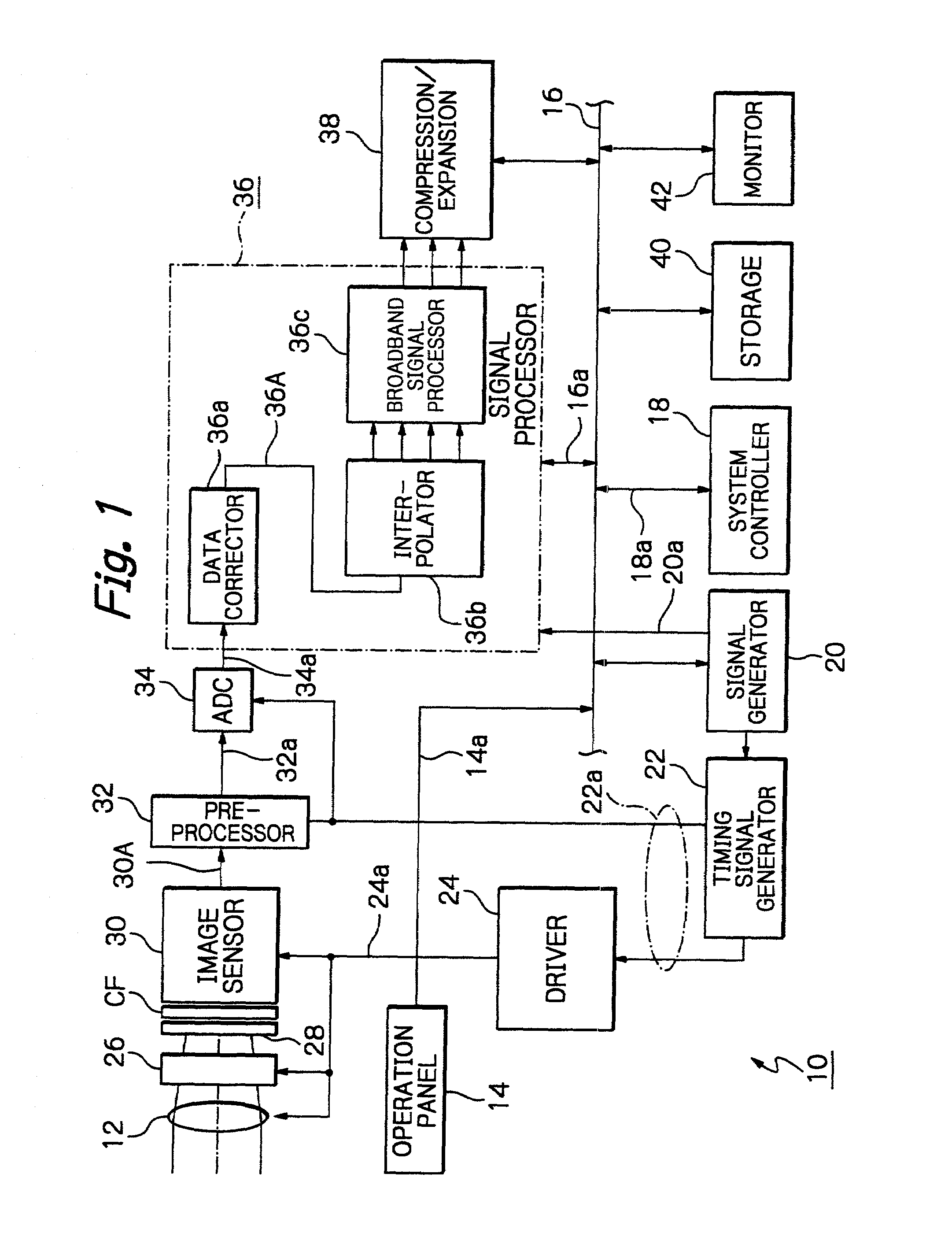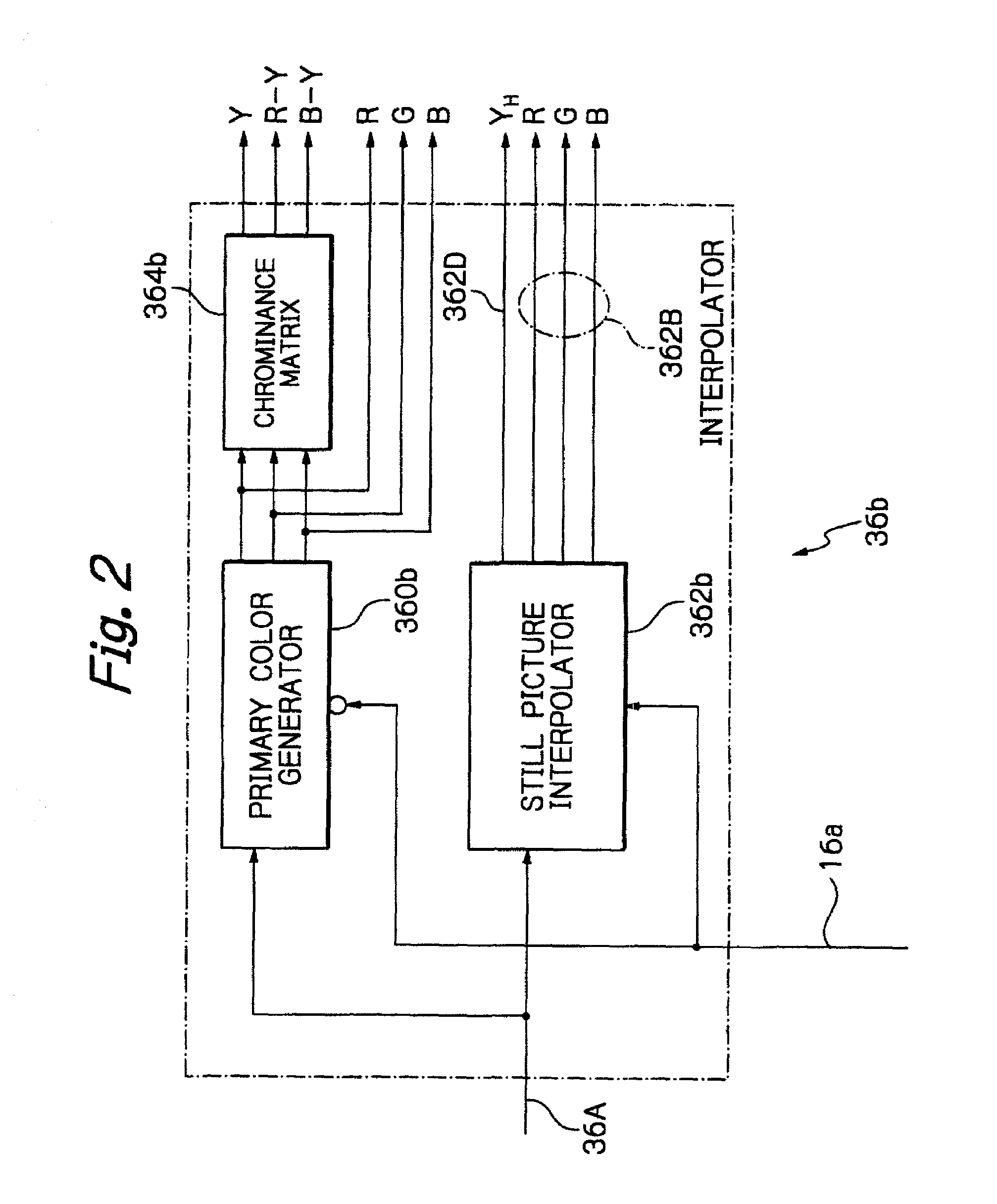Solid-state honeycomb type image pickup apparatus using a complementary color filter and signal processing method therefor
a honeycomb type, image pickup technology, applied in the direction of instruments, television systems, television system scanning details, etc., can solve the problems of reducing the sensitivity of individual image sensing devices, progressive scanning (or all pixel read-out), and the image sensor is not applicable to the mos image sensor. , to achieve the effect of enhancing the resolution of the picture, efficient use of light incident, and enhancing quality
- Summary
- Abstract
- Description
- Claims
- Application Information
AI Technical Summary
Benefits of technology
Problems solved by technology
Method used
Image
Examples
Embodiment Construction
[0090]First, the principle of the solid-state image pickup apparatus in accordance with the present invention will be briefly described. Color filter segments including complementary colors separate light incident thereto and representative of a scene. An image pickup section has photosensitive cells bidimensionally arranged and shifted from each other. An operation command section drives the image pickup section in either one of a first and a second preselected mode so as to read out signal charges generated in the photosensitive cells. This successfully promotes the efficient use of incident light, compared to the separation of primary colors. A digitizing section converts the signal charges to image data.
[0091]In the first mode, a signal processing section mixes the pixel data in the same manner as if signals were thinned out, or reduced, despite that the pixels are arranged in a pattern different from the conventional shifted pattern. Consequently, a single set of primary color ...
PUM
 Login to View More
Login to View More Abstract
Description
Claims
Application Information
 Login to View More
Login to View More - R&D
- Intellectual Property
- Life Sciences
- Materials
- Tech Scout
- Unparalleled Data Quality
- Higher Quality Content
- 60% Fewer Hallucinations
Browse by: Latest US Patents, China's latest patents, Technical Efficacy Thesaurus, Application Domain, Technology Topic, Popular Technical Reports.
© 2025 PatSnap. All rights reserved.Legal|Privacy policy|Modern Slavery Act Transparency Statement|Sitemap|About US| Contact US: help@patsnap.com



